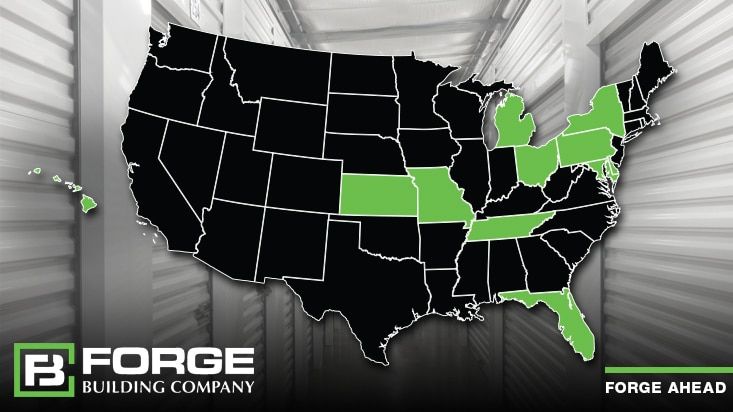
FOR IMMEDIATE RELEASE
Boise, Idaho – September 6, 2023 – Forge Building Company, a renowned nationwide storage builder, proudly announces its nationwide expansion with projects in eleven additional states. This significant milestone solidifies Forge Building Company as the leading expert in the self storage industry.
The nationwide expansion includes projects in Delaware, Michigan, Ohio, Kansas, Missouri, Maryland, Tennessee, Pennsylvania, Hawaii, New York, and Florida. With a focus on providing tailored and up-to-date solutions, Forge Building Company offers a diverse range of designs, including single-story and multi-level self-storage facilities, boat and RV canopies, storage condos, flex buildings, and conversions of large-scale retail spaces into self-storage facilities.
“We are excited to contribute to the development of local economies as we expand our company towards the East Coast and Hawaii,” said Hamish Bell, President of Forge Building Company. “Our transition from primarily operating west of the Mississippi to becoming a nationwide developer demonstrates our expertise in the self storage industry regardless of the location.”
Forge Building Company's commitment to customer satisfaction and close collaboration sets it apart from competitors. With 100+ projects already in the pipeline for the remainder of 2023 and throughout 2024, the company is well-positioned for continued growth and success on a national scale.
In the growing self storage industry, choosing the right builder is crucial to your success. With the Forge team, you’re not just hiring a storage unit builder; you are partnering with dedicated professionals committed to excellence in planning, design, engineering, construction, and project management.

About Forge Building Company
Founded in 2007 by veterans Hamish Bell and Hayden Farrell, Forge Building Company has become a comprehensive steel building expert and provider. With over two decades of experience as a nationwide storage builder and a portfolio of over 500 projects spanning 50 million square feet of construction, Forge Building Company, the self storage experts, remains privately owned and operated in Boise, Idaho.
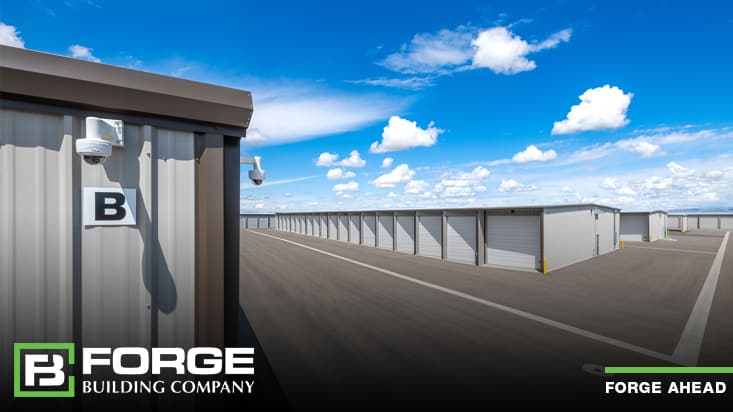
In the changing landscape of the self storage industry, the integration of cutting-edge smart technology has emerged as a transformative force, redefining the experience for both operators and builders. With the advent of smart locks and smart-security systems, robotics and AI, intuitive kiosks for seamless check-in/out processes, and user-friendly software and apps, HVAC control systems, and more, benefits abound on multiple fronts. For operators, these advancements provide a competitive edge and greater profitability with heightened security, streamlined operations, and increased customer satisfaction. Developers, such as Forge Building Company, who fully understand the importance of these technologies and know how to implement them into the facilities they are building, gain a competitive advantage in creating state-of-the-art facilities for their customers. Embracing this era of technology empowers self storage businesses to stay ahead in an increasingly digital world providing its customers with unparalleled convenience and peace of mind.
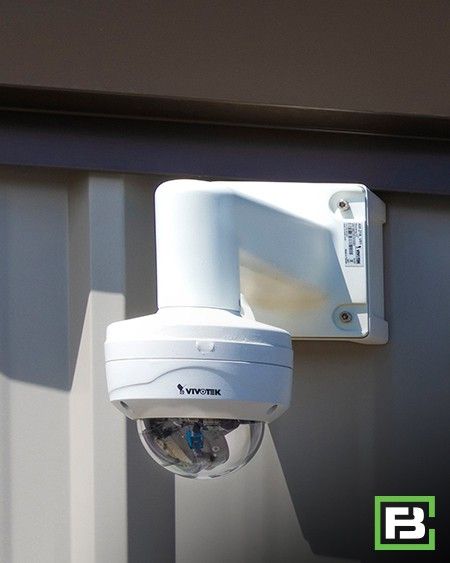 Smart Technology
Smart TechnologyThe integration of smart technology, including smart locks, smart security-systems, robotics, AI, and self-service kiosks for check-in/out, offers many advantages for both operators and builders of self storage facilities.
One of the most significant pieces of technology for a self storage business is security and location intelligence software. This software can also provide valuable insights into how foot and vehicle traffic flows at their facilities.
Many self storage software products also offer integrated security systems such as access control and video surveillance. This is key for protecting the owner’s investment.
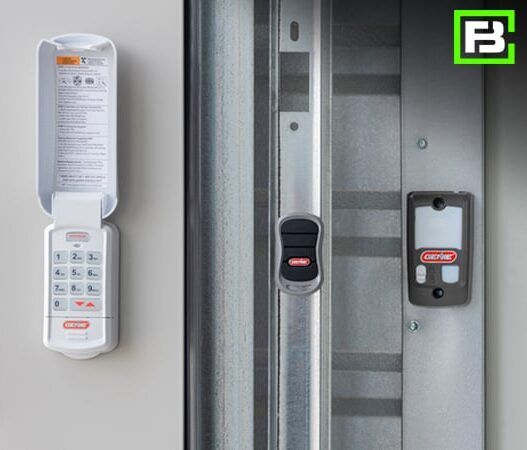 Smart Locks
Smart LocksWhen you combine smart locks with advanced security systems, operators have the ability for real-time monitoring and control over access points, minimizing the risk of unauthorized entry and potential theft. Smart locks and security systems also reduce the time that the building operator spends on tedious tasks such as checking and cutting locks. With the implementation of smart systems, operators can spend more time focusing on the needs of their customers and less time on “time consuming manual tasks”1.
Another trend driving the self storage market is the use of robotic/AI-driven surveillance systems. These types of systems can efficiently monitor large areas, identifying suspicious activities and alerting operators promptly, further fortifying the facility's security measures.
One major cost saving use of technology for self storage facilities is the implementation of intelligent kiosks. Instead of maintaining a physical presence on-premise round-the-clock, self storage facilities can now leverage intelligent kiosks to replicate the interactions a manager would typically have with customers. “These kiosks efficiently handle approximately 60% of the frequently asked questions, relieving the burden on staff and improving customer service”2.
Automated systems like smart kiosks offer numerous benefits by streamlining self storage operations. They play a crucial role in guiding tenants through the onboarding or move-in process. They can assist customers in choosing the appropriate storage size, facilitating unit access, accepting payments, and addressing lease-related inquiries. Embracing this technology empowers facilities to optimize resources and provide a more seamless and efficient experience for all parties involved3.
By incorporating smart locks and automated rental systems, operators have the opportunity to offer upgraded smart units at a premium price point. Tenants are willing to pay extra for the enhanced benefits. These benefits may include improved security, convenience, and the superior quality that these smart units provide. Additionally, the rental process can include automated options for tenants to select insurance coverage or other upgrades, making it a seamless and efficient experience for both tenants and managers alike4.

The incorporation of new software and apps in self storage facilities presents a wide variety of benefits for both operators and builders. For self storage management, these include:
Today, mobile apps enable self storage customers to quickly access facilities or units with scannable codes or RFID tags. These apps also supply customers with updates, such as notifications about payment due dates, access changes, and account management.
Furthermore, these software solutions provide real-time data and analytics, offering valuable insights into customer behavior, occupancy rates, and revenue generation. This data-driven approach empowers operators to make informed decisions and optimize facility performance6.
Very few places in the country are fortunate enough to avoid the frigid temperatures of winter, the extreme heat of summer and the humidity that comes with it. For that reason, climate-controlled storage spaces and HVAC control systems have exploded in popularity, and this is particularly true in areas prone to extreme temperatures or high humidity. Renters storing valuable or irreplaceable items often prefer climate-controlled self-storage units due to the high degree of protection and peace of mind they provide.
Owning a climate-controlled storage business is a great investment. Storage facilities that incorporate HVAC control systems typically command higher rental rates than traditional space of the same size. The amount of upcharge will vary by region of the country, however, in some markets, this could be 15-35% or more7. Another huge advantage is that the newest generation of 100% climate-controlled, multi-story buildings enables a developer to build roughly three times the rentable square footage on the same amount of dirt. This means the owner can absorb a much higher land cost. It also allows them to consider many more parcels for a project8.
For more details on climate-controlled self storage units, see our blog, “Is Climate-Controlled Self Storage Worth the Investment?” and our video Climate Control Self Storage.
Integrating cutting-edge smart technology and adopting new software and apps have revolutionized the self storage industry. They yield substantial benefits for both operators and builders. With enhanced security, streamlined operations, and increased customer satisfaction, operators can navigate the challenges of an increasingly digital world. The convenience and peace of mind offered to customers through smart locks, robotics, kiosks, HVAC control systems, and user-friendly apps redefine the self storage experience, attracting a tech-savvy clientele. Furthermore, builders gain a competitive advantage by offering these new technologies in state-of-the-art facilities with advanced security and convenient self-service options. As the self storage landscape continues to evolve, embracing this era of technology proves essential for thriving in the industry and ensuring unparalleled convenience for customers
Works Cited
1,4. Hembree, Jordan. “5 Reasons Smart Locks Are a Self Storage Manager’s Best Friend.” Janus International Group, 31 Dec. 2020, https://www.janusintl.com/news-media/blog/best-smart-lock. Accessed 3 Aug. 2023.
2,3. Ramirez, Rodolfo. “How AI and Big Data Are Disrupting the Self Storage Industry.” Swivl, 21 June 2023, https://www.tryswivl.com/blog/how-ai-and-big-data-are-disrupting-the-self-storage-industry. Accessed 3 Aug. 2023.
5. Burnam, C. (2023, April 18). Forbes.com. Retrieved from Forbes.com: https://www.forbes.com/sites/forbesbusinesscouncil/2023/04/18/three-ways-technology-is-changing-the-self-storage-industry/?sh=645f69c53604
6. Austin, David. “Should I Use a Self Storage App for My Business?” Storagepug, 7 Feb. 2023, https://www.storagepug.com/blog/self-storage-app. Accessed 4 Aug. 2023.
7. Regency Steel Buildings. (n.d.). Retrieved from Ministorageoutlet.com: https://ministorageoutlet.com/self-storage-industry-projections/
8. Rider, J. A. (2022, February 20). howmuches.com. Retrieved from How Muches: https://howmuches.com/how-much-does-it-cost-to-build-a-climate-controlled-storage/
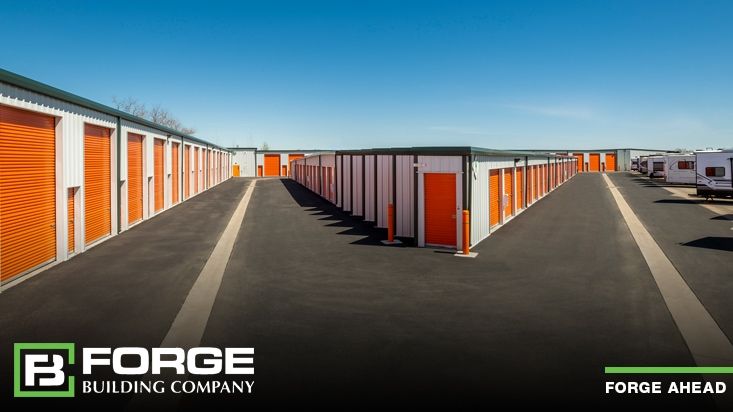
Let’s face it, the self storage industry, which continues to see amazing growth, has come a long way. According to Mordor Intelligence Research, the valuation of the self storage market reached $87.65 billion USD in 2019. By 2025, that valuation is expected to grow to $115.62 billion. This puts the compound annual growth rate (CAGR) at 134.79% over the forecast period of 2020-2025.1
More and more, today’s different types of self-storage facilities are being built with an increasing emphasis on design and amenities, as well as security and convenience. Regardless of what you need to store, there is likely a spot that will provide the space you need with a few bells and whistles, too. As the industry has grown and continues to grow, so has the value associated with this type of investment.
And for the savvy investor, there are now more options than ever - from the traditional drive-up units to multi-story buildings to climate-controlled spaces to converting an office or big box store to building storage condos for boats and RVs. There are a wide variety of self storage options to choose from depending on your budget, location, and needs within the community in which you intend on building.
To see the types of projects Forge is involved with, see:
Let’s explore each option.
The traditional drive-up self storage facility typically offers outside drive-up storage. These warehouse type of units typically charge by the month and provide wide driveways for trucks to unload belongings into individual units. The interior spaces range in dimensions from 100 square feet up to hundreds of thousands of square feet.
This type of facility works well in communities where customers want to store and organize their belongings in a safe, clean place with easy access to their goods. These types of storage units provide the highest level of convenience and work best in a community where people want to load or unload their goods as quickly as possible. They are a great option where land is plentiful enough to create drive-up pathways.
These types of units typically do not offer climate-control options.
For an example of a traditional drive-up facility built by Forge Building Company, see Wise Space Storage | Boise, ID.
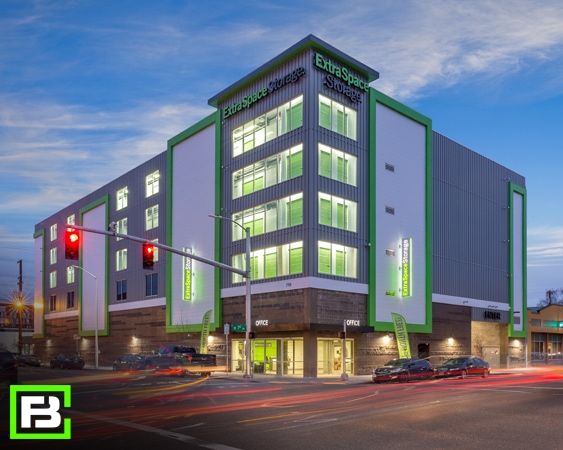 Multi-Story
Multi-StoryMulti-story self-storage is great for when land space is limited. These are also ideal for the investor wanting to add climate-control options. Some may contain drive up options for the lower levels, then climate-control options for the upper levels.
Climate-controlled self storage is a great option in areas of the country that experience extreme heat or cold temperatures and/or that experience high humidity. These units are great for your customers storing furniture, antiques, artwork, and other items where the climate needs to be controlled to avoid moisture buildup and mold prevention.
For more information on whether or not climate-controlled self storage is worth the investment, see our blog titled, “Is Climate-Controlled Self Storage Worth the Investment?” and for an example of a Forge Building Company climate-controlled storage facility build, see: Kuna Caves Storage
 Conversions
ConversionsWith the recent pandemic and decline in big-box retail, there is now a significant inventory of vacant buildings out there for sale. With the current trend of office vacancy rates increasing, building owners are seeking creative ways to make that empty space generate profit again. As such, some are converting these structures into self storage facilities or selling them to others who wish to do so. These buildings can be converted into climate-controlled units or more traditional drive-up units depending upon the building, location, etc.
While this development path can be an efficient time and cost-saver, there are important considerations. These are addressed in our blog titled, “Converting Office and Big-Box Retail Buildings to Self Storage.”
Americans love to travel and have been purchasing RVs and boats for years. According to numbers shown from industry trade groups and places like Statistica 2, Camper FAQs 3, and Go Rving 4, growth in ownership and usage of RVs and boats is growing.
The RV industry alone has seen consistent growth every year since 2009, and with the popularity of van life coupled with the pandemic, there was a huge spike in Gen-Z and millennial RV owners that wanted to travel and have recreational experiences without crowds. Many also found that they could work from remote locations, which meant they could live in RVs and work, not just use them for travel. This helped the outdoor recreation industry to reach close to a trillion dollars.
There are many factors to indicate that the storage condo business is worth the investment, including local market conditions. Many areas of the country suffer from a lack of vehicle storage or places where boats and RVs can be stored securely. There are currently over 25,000,000 boat and RV owners with another 9,000,000 expected to join the market in the next 3 years. Economic and social trends indicate that this is likely to continue throughout 2023 and beyond. As the sales of RVs and boats increase, the demand to store these vehicles is also likely to grow. Traditional self storage facilities have limited space and amenities to store RVs and boats, which means that demand for RV/boat condos will likely grow as RV and boat sales rise.
Owners of other types of vehicles, such as collectible and antique cars, motorcycles, and commercial vehicles, may also be in the market for storage condos. Owners of all these vehicle types will not only want a unit for storage, but for maintenance and light repairs as well – a secure place where they can pursue their hobby.
For more information on where this segment of self storage is heading, see our blog titled, “Where is Boat and RV Storage Headed?” and for an example of a Forge Building Company Storage Condo development, see: Luxe Locker.

There are many perks that investors look forward to when owning a self storage facility.
Consistent Demand
From boat & RV condos to small units that accommodate a few moving boxes, there is generally a reliable level of demand for this type of commercial real estate. Finding and/or building the facility that is right for your budget and location is key.
What’s more, self storage businesses can usually weather the storm of an economic downturn or recession. When people are forced to downsize or move, self storage becomes a valuable option.
On the other hand, when the economy is strong, people are more likely to buy things or pursue home renovations that require temporary furniture storage.
Flexible Management Options
In comparison to other types of businesses, interaction with customers is usually minimal. Facility owners may choose to have a small team, but it’s not uncommon for a single person to run this type of business.
Aside from providing tours and signing contracts, it usually isn’t necessary to always have someone on the premises. Once a contract is signed, tenants have access to their unit and can make automatic payments each month. As an investor or facility owner, you can be as involved as you want to be.
Opportunities for Additional Revenue
The base rent for your storage units will be your main source of income, but many self storage locations offer a variety of other products and services to generate more revenue.
In addition to selling moving and storage supplies, such as boxes and packing materials, many storage businesses partner up with other companies to offer truck, trailer, and van rentals.
Low Maintenance Costs
Self storage is very low maintenance. Aside from proper lighting, security, and landscaping, there isn’t much to tend to. Common areas should be clean and well-maintained, but there’s no reason to invest in extensive decor.5
Choosing the right self storage investment option will depend on your location and its market, budget, and demand. The team at Forge Building Company is happy to help you through the entire process. Just give us a call.
Works Cited
1. Meyers, S. (2020, December 1). Forbes. Retrieved from Forbes.com: https://www.forbes.com/sites/forbesrealestatecouncil/2020/12/01/a-look-at-self-storage-growth-trends-now-and-post-pandemic/?sh=79758c022165
2. Statista. (2022, December 9). Retrieved from Statista.com: https://www.statista.com/statistics/1155988/us-recreational-boating-vessels/
3. Camper FAQs. (2023). Retrieved from Camperfaqs.com: https://camperfaqs.com/rv-statistics-trends-facts
4. Go Rving. (2022, June 16). Retrieved from gorving.com: https://www.gorving.com/newsroom/rv-industry-association-manufacturing-statistics
5. Mizes, B. (2023, January 5). CREXI. Retrieved from Commercial Real Estate Exchange, Inc.: https://www.crexi.com/insights/8-pros-and-cons-of-investing-in-self-storage?g_acctid=166-395-
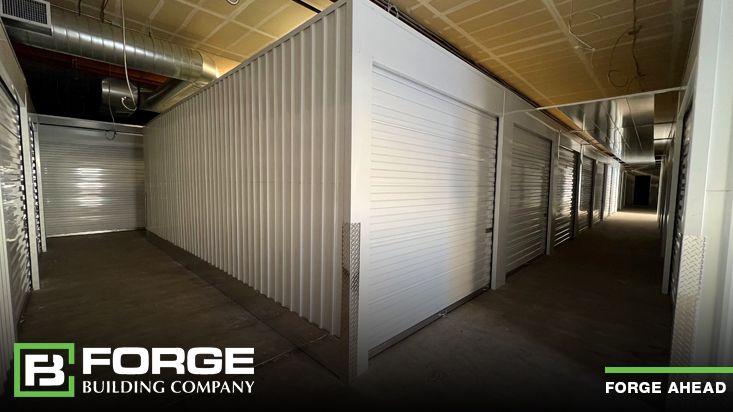
With the recent pandemic and decline in big-box retail, there is now a significant inventory of vacant buildings out there for sale. The current trend of office vacancy rates increasing, building owners are seeking creative ways to make that empty space generate profit again. As such, some are converting these structures into self-storage facilities or selling them to others who wish to do so.
While this development path can be an efficient time and cost-saver, there are important considerations. This blog will help you decide if conversion of an existing building is the right path for you to be able to properly transform a structure into a well-built self storage facility.
Like any building project, there are definitely pros and cons to consider for conversions of existing buildings into a self storage facility. Here’s our take.
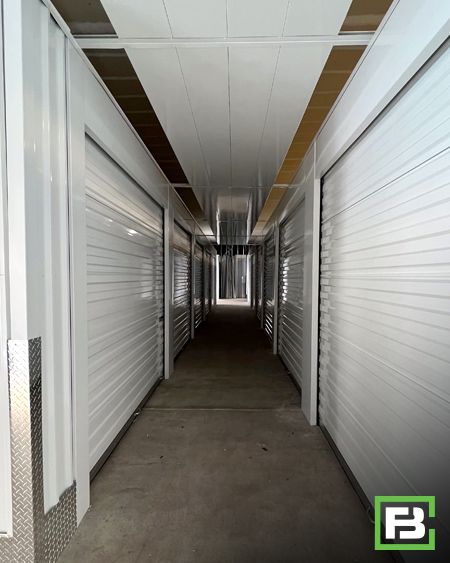 Pros. Because of the amount of inventory out there, you may be able to purchase an existing building for less than it would cost to build it, so after completing the renovation, you’ll have a lower cost basis for your project. Another advantage is that if you maintain the footprint, access points, and site circulation, you may also be able to avoid going through the site-plan approval process with the city, which can save money and simplify entitlements. These advantages add up to an expedited construction schedule at a lower cost.
Pros. Because of the amount of inventory out there, you may be able to purchase an existing building for less than it would cost to build it, so after completing the renovation, you’ll have a lower cost basis for your project. Another advantage is that if you maintain the footprint, access points, and site circulation, you may also be able to avoid going through the site-plan approval process with the city, which can save money and simplify entitlements. These advantages add up to an expedited construction schedule at a lower cost.
Cons. On the flip side, since the structure wasn’t originally built with self storage in mind, it may not always be located in an optimal location for visibility. In addition, the design needs to adapt the building can cause irregular unit sizes and long travel distances from loading areas to units. One other consideration is zoning. This can be a problem since many vacant buildings in commercial zones don’t allow for self storage. Finally, it is important to assess the acquisition price and building condition against all the costs of the conversion and anticipated profits down the road to determine if conversion is the right business strategy.
Along with the pros and cons mentioned above, following are some other considerations.
For any self storage building project, whether it’s a conversion or one being built from the ground up, your site selection is the number one consideration. Retail-like visibility is always preferable to being out of sight. No amount of online marketing can replace the free exposure of being located along a frequently driven, high-traffic route. Proximity to potential customers is key.
One of the most restrictive challenges in pursuing a conversion project is finding a building where self storage is permitted. Thankfully, many jurisdictions appreciate creative solutions to filling empty structures. A zoning authority that has a positive view of storage as a community-serving use will aid your cause; however, if storage is still considered an industrial use that should remain on the periphery of communities, your development path is going to be all uphill, costing excessive time and money.1
As in any type of self storage build, it is critical to understand rates, occupancies, and the competitors around you. The team at Forge always recommends that a complete and thorough market study be completed. It is also key to investigate whether or not self storage is allowed in the zone where the building is located. If it is, then you may need a conditional-use permit or rezoning permit.
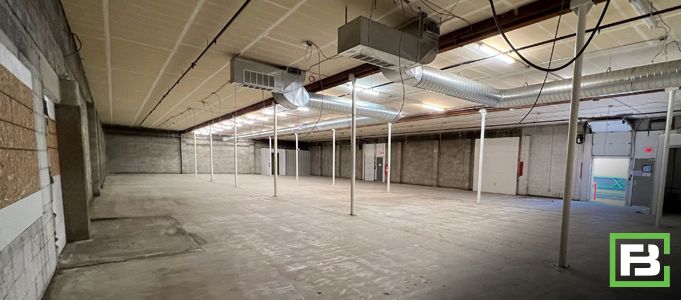
Old Idaho Statesmen Building Before Conversion to Self Storage
Forge also always recommends that you check the title and survey to determine if there are covenants, conditions, and restrictions, easements, and other agreements that could impact your ability to convert the building. It’s common, especially with retail properties, to have private restrictions that prohibit self storage, easements that impact circulation, common-area maintenance fees, shared utilities, etc. Environmental problems are also common, especially in older manufacturing and warehouse facilities. Thoroughly understanding your site and its history is a key part of having a successful project.
When looking at starting a conversion project, typically a commercial zone 2 (C-2) location is the most desirable in a market area. It will typically have a large and destination-bound traffic count and great visibility. In addition, facilities in C-2 typically rent up faster than those in light industrial 1 (I-1).2
It is also good to eliminate any potential site that cannot accommodate a minimum of 50,000 net rentable feet. This is typically optimal for cost-efficient management.
Once you have your site selected, you will need to assess the structure itself – the roof, structure, parking lot, mechanical, etc. In addition, many old buildings have refrigeration systems and other items that are costly to remove. Asbestos, and other hazardous materials remediation may also need to be addressed.
Floor load. If the building you are looking to convert is a multi-story building or has a mezzanine, it is key to ensure the floor load is adequate for self storage use.3 One of the most significant costs in the conversion of office space to self storage will be the assessment and likely remediation of the structural system. Most office buildings have been designed and constructed with a much lower live load than what’s required for self storage, often rated for 50 to 80 pounds load per square foot (PSF) compared to 125. That’s about a 50 percent deficit.
To help you calculate the loading design, it is key to do field measurements with limited destructive testing and a structural engineer. (See our blog titled, “Designing a Self Storage Facility – How to Select Your Design Team”)
If the structural engineer finds that the structure doesn’t meet the required loading for self storage, there are still solutions. Adding light-gauge bearing walls is the most cost-effective, while reinforcing existing beams could also be sufficient. Reinforcing under-bar joists is the costliest solution.
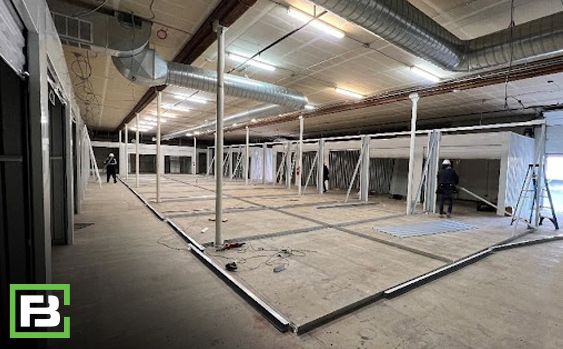
Old Idaho Statesmen Building During Conversion to Self Storage
Rentable Space. Most urban and suburban self storage facilities are 100,000 to 120,000 gross square feet. However, taking into account elevators, stairs, and corridors may reduce the rentable yield to 75,000 to 90,000 square feet. It’s key to know what amount of rentable square footage is necessary to be profitable.
Another consideration you will need to make in this same area of the design, is the average unit size and mix.
In a standard conversion, you’ll use the existing building without changing the overall footprint. This is the easiest, most straightforward type of project. Depending on the building, it is also common to add one or more floors in the existing footprint.
Increasing the rentable square footage of the building through a footprint expansion or the addition of more structures can be another great option. This may include adding drive-up units or vehicle storage in the rear or side of the building.
At the end of the day, the design of your conversion will play a significant role in its success.
Thermal envelope. Energy-code compliance has only been around since 2012. Therefore, the level of renovation necessary will depend on the existing wall, slab, and roof.
Elevators. Check to see if the existing elevators are in your tenant loading/unloading area. A self storage elevator should have a 4,500-pound capacity with a taller cab to accommodate large pieces of furniture.
Loading area. An appropriately sized loading and unloading area with ample space to maneuver large vehicles, such as moving trucks, is key. Your loading area should have a minimal vertical clearance of 14 feet. It should also be convenient to the building interior, particularly the elevator.
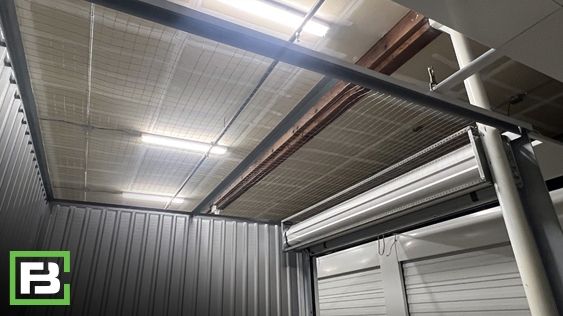
Old Idaho Statesmen Building After Conversion to Self Storage
Self storage has some of the easiest mechanical systems of any real estate type. In the case of an office conversion, the goal is to minimize replacement. The preferred self storage HVAC system is a residential-sized split system with minimal to no ductwork. Boilers and other perimeter unit systems lack efficiency.
A sprinkler system will likely be a code requirement for self storage structures of 100,000 square feet or more. If your building has such a system already, the upgrades should be minimal. The large open areas with no ceilings allow for an optimized sprinkler-head layout.
The last item to evaluate is the electrical system. Typically, the system already in place is likely to be sufficient to meet your self storage needs, but plan to replace the lighting to more energy-efficient LEDs with motion sensors.
The exterior look of the building is key, especially to potential customers driving by. That’s why it is key that your building stands out. Fresh paint, clear, visible signage and nice landscaping increase the curb appeal.
The building-conversion process always comes with extra surprises. Therefore, it’s important to carefully select a professional design and construction team with self storage experience such as Forge Building Company (see our blog titled, “Designing a Self Storage Facility – How to Select Your Design Team”).
Self storage conversions are a great alternative to ground-up development. Evaluating the site, assessing the building, designing the project, and understanding the costs will provide you the information you need to make a wise decision. Finding one that meets the criteria for self storage with limited need for remediation can be a tricky, so working with the team at Forge Building Company can make the process much easier. The budget savings of building a self story facility from a conversion can be 25% to 50%. Give the team at Forge a call today, we would love to help you convert an existing building.
Works Cited
1. Brown, R. (2023, March 22). Inside Self Storage. Retrieved from Insideselfstorage.com: https://www.insideselfstorage.com/conversions/converting-old-office-buildings-outstanding-self-storage-facilities
2. Pollack, L. (2012, July 20). Inside Self Storage. Retrieved from Insideselfstorage.com: https://www.insideselfstorage.com/conversions/retrofitting-building-your-dream-self-storage-facility-guide-intrepid-souls
3. Wyckoff, S. (2021, January 21). Inside Self Storage. Retrieved from Insideselfstorage.com: https://www.insideselfstorage.com/conversions/self-storage-conversion-projects-pros-and-cons-building-assessment-design-pitfalls-and

As 2022 winds down, the team at Forge wanted to make our customers aware of new laws that will go into effect in the new year that may impact their business. Many states have been busy updating self storage legislation this year. This affects the way facility owners handle lien sales, rental agreements, vehicle towing, employees, ADA compliance on websites, and more. Here are just a few.
Last year, at least 13 states modified some portion of their self storage statutes that address one or more of the following items.1 This will likely hold true for 2023.
The safest way to protect yourself and your business is to compare your lien-sale procedures and rental agreement against the current law to ensure any necessary language additions or removals have been made. As an example, some states allow self storage operators to send lien notices via email, however, they may also require some sort of formal disclosure and acknowledgement by the tenant before you can legally send notices that way. Another example is when states allow you to use online auctions for lien sales, they may require additional language in your rental agreement or sale notice, so tenants understand sales are no longer conducted on property.
 Recently, there has been a significant increase in website accessibility where plaintiffs claim that they cannot access websites because they are incompatible with assistive technologies. In such cases, plaintiffs usually cite American with Disabilities (ADA) Title III violations.
Recently, there has been a significant increase in website accessibility where plaintiffs claim that they cannot access websites because they are incompatible with assistive technologies. In such cases, plaintiffs usually cite American with Disabilities (ADA) Title III violations.
Ironically, websites are covered by the ADA. The U.S. Department of Justice has interpreted Title III of the ADA to include websites as places of public accommodation, while Title I requires employers with 15 or more employees to comply. A website that is fully accessible is not at risk of receiving a demand letter claiming ADA violations.2
US Courts and the Department of Justice have cited the Web Content Accessibility Guidelines or WCAG 2.0 (Level AA) as the reference in lawsuits as the standard for website accessibility – and therefore ADA compliance.3
Who is covered by the Americans with Disabilities Act?
ADA compliance refers to WCAG compliance, a way of designing websites, tools, and technologies so that everyone, including people with disabilities, can use them as easily as possible. These take into consideration those with different types of disabilities such as:
How can you avoid legal risk? There are two main steps:
1 Check your level of compliance by performing an accessibility audit of your website usage.
2 Install a high-level web accessibility solution on to your website.
How Does This Help the User Experience?
The nature of accessible web design allows content to be shared across a variety of devices. This in turn ensures that every web user benefits from accessibility considerations.
As a matter of fact, one billion people globally have some kind of disability. This population has a spending power of more than $6 trillion. Statistics have shown that 80% of people with a disability will take their business elsewhere because of poor web accessibility.4 By building an accessible website, you are widening your audience and increasing your prospective customers.
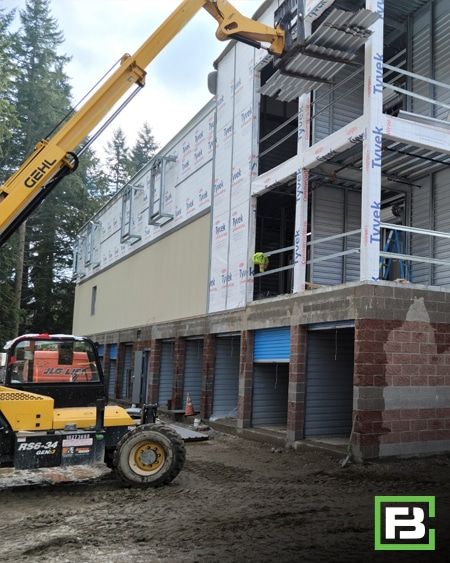 Labor and Employment Bills
Labor and Employment BillsAs we turn the calendar, you also need to be aware of many new labor and employment bills that will go into effect.5 For specifics, check with your state law details. These include:
When concerned about new laws, legislative updates, and compliance, please make sure that you are looking beyond your state’s self storage statute. Those statutes do not necessarily contain all regulations that pertain to your business.
One example is with the sale of tenant insurance. These provisions are normally placed in the state’s insurance statutes. In states like New York, the lien-sale advertising requirement can be found in a different section of the state statutes. Other laws in the various states control things such as what you are able to charge a tenant for submitting a bad check as payment.
These are just a few of the new laws that the team at Forge is aware of. Of course, any time you have questions or concerns, it is best to contact your attorney to ensure you are aware of the latest and most important statutory developments. This will help protect your self storage business and keep it in compliance with the current laws.
Works Cited
1. Greenberger, J. (2021, October 22). Inside Self Storage. Retrieved from InsideSelfStorage.com: https://www.insideselfstorage.com/legal/what-you-need-know-about-recent-changes-state-self-storage-legislation
2. Ronen, R. (2022, January 21). Forbes. Retrieved from Forbes.com: https://www.forbes.com/sites/forbesbusinesscouncil/2022/01/21/ada-compliance-for-websites-getting-it-right/?sh=386010f148c0
3. Siteimprove. (2022). Retrieved from Siteimprove.com: https://www.siteimprove.com/glossary/ada-compliance-checker/?utm_campaign=us_fy20_ppc_accessibility_bing&utm_medium=ppc&utm_source=bing&utm_content=ada-requirements&tad_id=84250407544633&adgroup_id=1348002241464864&campaign_id=413363497&msclkid=79f79cda3d
4. Michelle Yin, D. S.-M. (2018, April 17). AIR. Retrieved from air.org: https://www.air.org/resource/report/hidden-market-purchasing-power-working-age-adults-disabilities
5. California Employers Association. (n.d.). Retrieved from Employers.org: https://www.employers.org/events/private-webinars/2023-labor-law-update-sponsored-by-california-self-storage-association/01/26/2023/

Designing and developing a profitable self storage facility requires much more than picking the perfect location and unit mix. The vendors you select and the team you work with can impact decision making and impact the bottom line.
In the early years of self-storage, many facilities simply consisted of single-story, garage-style structures built from a flat slab with concrete block walls and simple wood-truss roofs. Today, with a scarcity of available land, many self-storage owners and investors are building multi-story units that are climate controlled and energy efficient. Materials being used are very different as are the requirements for new construction and building codes, especially those mandated by new standards of energy efficiency.
However, before you build or start down the design planning road, it is imperative that you engage a company to do a market feasibility study. This is a critical first step since most investors and developers want to know if the property will be profitable before going into the design phase.
Once your market feasibility study is complete, the Forge team will provide a complimentary site layout in this preliminary phase of the project. This site layout can then be turned into AutoCAD drawings so the architectural team can make any necessary updates and incorporate these into the architectural set of drawings (see below).
So, who are the key players you will need in your design team? Below we outline the major vendors and how they will contribute to the development of the most aesthetically pleasing, profitable, and cost-effective self-storage facility.
Now that you know who the players are, the next question is how do you choose the right companies to provide these services? Just like with many service-oriented businesses you’ll want to choose a business that has a solid reputation, comes from a referral, or meets your expectations with initial interactions. Beyond the basics of choosing a “good” company to work with there are some key attributes specifically for the architect, structural engineer, and civil engineer that you want to take into consideration.
First, it is absolutely critical to select an architect and structural engineer that have experience specifically with self storage. There are aspects to self storage that are very different from building a multi-family or commercial development. The architect and structural engineer don’t have to be local to the area that you are building in, however, they need to be able to effectively obtain information required in order to communicate with you about your project. It's a little bit of a different situation with the civil engineer.
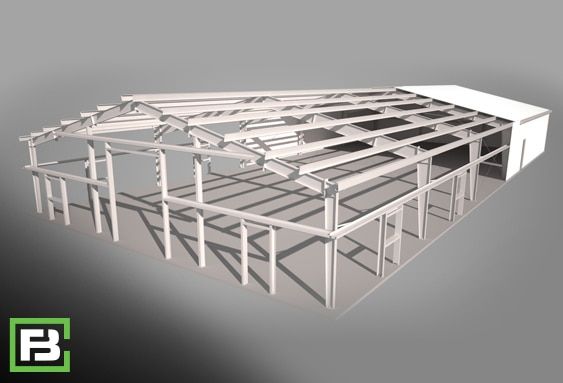
It's a good idea to select a civil engineer that is familiar with the region in which the project is being built. The reason for this is you want the civil engineer to have experience and knowledge specifically with the conditions of the soil within a particular area. Different parts of the county have different types of earth that needs specific considerations. For example, building in the wetlands of Florida is going to vary greatly from building in the dry dessert of Arizona.
Another thing to keep in mind is that these companies should be working collaboratively together. If buildings need to move because of where the retention pond is, then the architect will need to make changes to the layout. If this causes a building size to change, then the structural engineer is going to have to adjust their drawings. So, with these things in mind, make sure that every player has the bandwidth to take on another project. To keep progress moving along, you don’t want anyone held up because one of the team members doesn’t have time.
As you are making selections on your design team, it is a good idea to make your selection on a steel building contractor. Many of these contractors, like Forge Building Company, offer structural engineering as part of their services. The benefit of bringing a steel contractor into the design phase is that it allows them to provide insight on best practices that they have seen over the years, as well as allow them to show where there may be areas to value engineer the project, ultimately saving you money.
When selecting a steel frame building contractor, it is key to work with one that has created custom steel buildings of every shape and size. Here are some questions to ask when making your decision on who to work with:
The right steel building contractor should also be able to provide:
For more considerations, also see our blog “Commercial Steel Building Developers.”
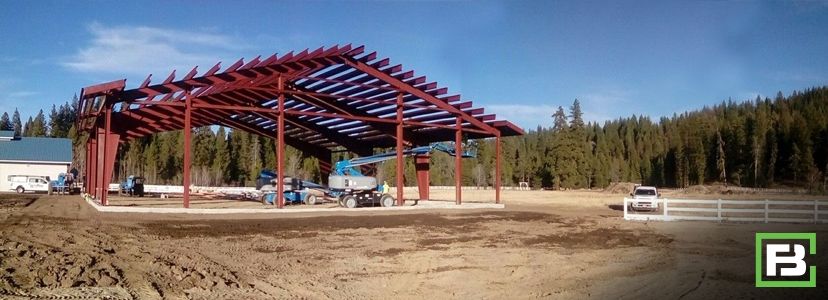
For the last 15 years, Forge Building Company has partnered with investors and developers on over 500 self storage projects. With our experience in this space, Forge can provide all the necessary vendors and information needed for your project to be a success – from start to finish.
Here is how we can help. Forge offers:
Whether you are considering your first or your fiftieth self storage project, we are ready to partner with you. Forge knows self storage and has built over 60 million square feet of it.
To hear more about what our customers are saying about working with Forge as a one-stop shop, see https://www.youtube.com/watch?v=P7WFCRms2kI.
Let’s begin the discussion on your next project. Click here to connect!
Contributing Editor: Melissa Anderson, Forge Building Company
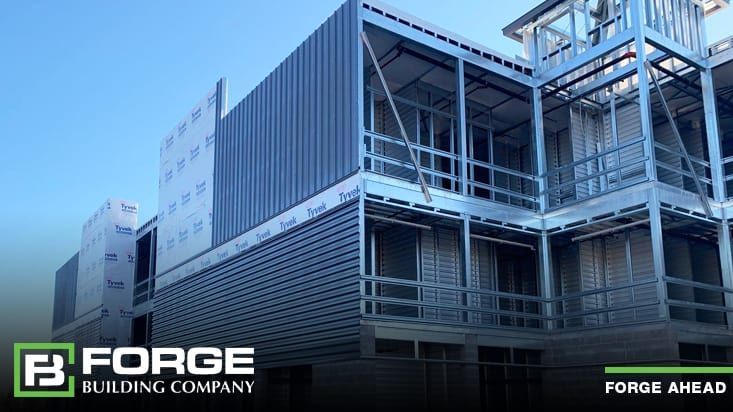
With the self storage market booming, many investors are jumping in or expanding on existing facilities they own. Whether this is your first build or fiftieth, self storage facilities are designed and operated much differently than other real estate product types. So, before you start planning and building a self storage facility, there are some common mistakes you will want to avoid.
The team at Forge Building Company has repeatedly witnessed many of the same construction mistakes when the property owner didn’t hire someone with industry experience (like Forge) to oversee the development. Common design and construction mistakes can cost a self storage owner a lot in extra expenses, and possibly long-term financial losses, because these mistakes can’t be easily corrected. Let’s take a look at these common mistakes and how to avoid them.
From the onset, some of the biggest mistakes are made in site selection and design – from choosing the right site and land for development to determining unit mix. Here’s how to avoid these mistakes.
On average, here’s an ideal 100-unit ratio for a new facility:
Before you start your build, here are some of the very basic mistakes that can be completely avoided with proper planning and communication.
 Not understanding fire code and fire hose access: It is key for property owners to fully understand fire code and provide fire department access roads that are up to code, which allow a quick response time.
Not understanding fire code and fire hose access: It is key for property owners to fully understand fire code and provide fire department access roads that are up to code, which allow a quick response time.As you’re building your facility, it is key to keep in mind that your facility should be welcoming, easy to see, and easy to access. Here are some mistakes to avoid in this area.
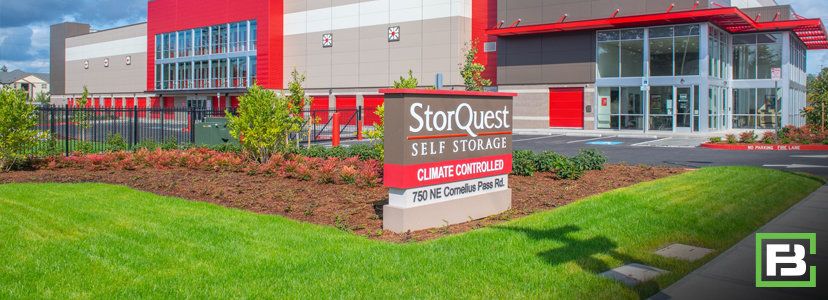
What other areas do you need to think about when planning and building a self storage facility? Here are a few other mistakes that can easily be avoided.
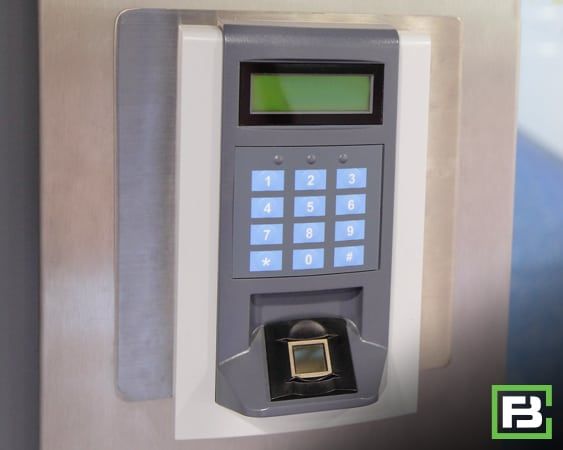
Avoiding these common mistakes when planning your next self storage project, will ensure you build it right and enjoy a long and successful investment for years to come.
Works Cited
1. Goodin, M. (2014, July 23). Inside Self Storage. Retrieved from Insideselfstorage.com: https://www.insideselfstorage.com/security/25-design-and-construction-mistakes-self-storage-owners-and-developers-should-avoid
2. Reliant-mgmt.com. (n.d.). Retrieved from Reliant Real Estate Management, LLC: https://www.reliant-mgmt.com/self-storage/top-20-mistakes-in-self-storage-investing

In an economy that appears to be heading into a recession and investors preparing for another jumbo-sized rate hike next month, why should one consider investing in self storage today – especially given that the S&P 500 fell 2.9%, the Dow Jones Industrial Average fell 2.2%, or 669 points, and the Nasdaq slipped 3.7%?1 While not necessarily the sexiest asset class in commercial real estate, self storage is still seeing a continuum of strong growth and still appears to be the most recession-resistant sector in commercial real estate.
The good news for self storage owners is that history has proven the recession resilience of the self storage industry. During the Great Recession of 2008, all commercial real estate segments experienced a net annual loss from 25 to 67% with the exception of self storage, which posted a gain of 5%. In addition, this sector had the least number of foreclosures.2
Even with all of the recent price increases in construction materials, energy, and wages, self storage is staying ahead of inflation with rent increases. The higher rental rates paid by tenants are offsetting the rise in new-construction and operational costs while allowing self storage owners to reap financial gains during these current economic times.
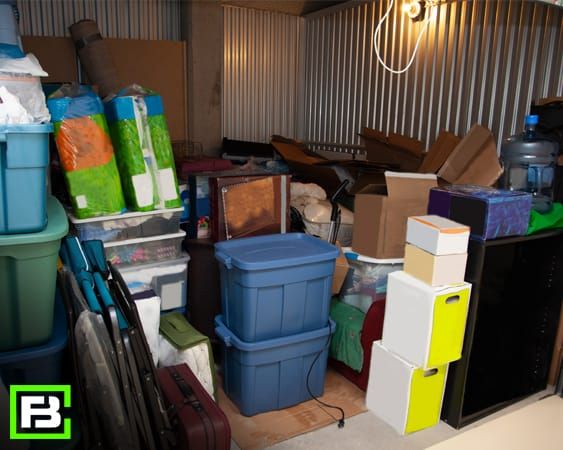 Americans, in general, tend to accumulate and hold on to a lot of stuff. With the craziness of the real estate market, many millennials are being priced out of owning a home. In addition, many baby boomers are downsizing, opting to rent and live in apartments and smaller rental homes, which have much less storage space than the homes they are moving from. Thus, the biggest demand for self storage is created by people moving from one place to another.
Americans, in general, tend to accumulate and hold on to a lot of stuff. With the craziness of the real estate market, many millennials are being priced out of owning a home. In addition, many baby boomers are downsizing, opting to rent and live in apartments and smaller rental homes, which have much less storage space than the homes they are moving from. Thus, the biggest demand for self storage is created by people moving from one place to another.
With recession also comes job loss which may also force a homeowner to sell their home, or they may lose their home through a foreclosure. Changing jobs, relocation, divorce, death, college students moving back home for the summer, and many other events also create a demand for self storage.
Another reason that self storage continues to perform well is that self storage has one of the lowest break-even occupancies in the commercial real estate market, often as low as 60%. Self storage owners can also quickly and legally evict non-paying tenants. The contents of a storage unit can also be auctioned off to cover any unpaid rent.
Like any investment, there are always risks. Because self storage is a great investment, there is now an increasing number of properties being built and more competitors coming into the market.
Like other industries, inflation and the current economy has hit the self storage industry in two areas – operations and new construction.
Operation and life cycle costs such as marketing, utilities, property taxes, insurance, and routine repair and maintenance are definitely on the rise. And with the current economic environment, qualified labor is also becoming harder and harder to come by.
The cost of doing business coupled with rising interest rates could slow the pace of construction even more as financing for projects becomes more expensive. However, while some developers are pulling back from new construction projects as a result of the skyrocketing materials and labor costs, others have recently discovered self storage as being resilient during hard economic times and are now dynamically reallocating money into this industry, pursuing acquisitions and new development deals.3
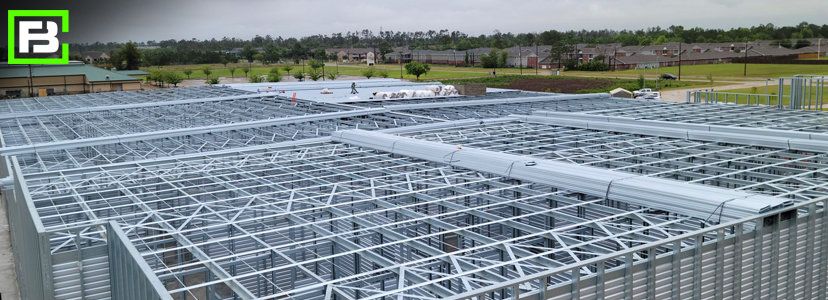
While the self storage industry has its risks, many investors and developers are still seeing it as being very attractive as a recession-resistant investment in a time of uncertainty. And according to Mordor Intelligence Research, the self-storage market is expected to grow to $115.62 billion by 2025. This puts the compound annual growth rate (CAGR) at 134.79% over the forecast period of 2020-2025.4
Works Cited
1. Ebrahim, Y. (2022, October 7). Investing.com. Retrieved from Investing.com: https://www.investing.com/news/stock-market-news/sp-500-slips-as-strong-jobs-report-puts-hawkish-fed-bets-back-in-focus-2907596
2. Mainstay Global. (n.d.). Retrieved from Mainstayglobal.com: http://www.mainstayglobal.com/is-self-storage-recession-proof
3. Fitzgerald, J. (2021, December 14). Storable. Retrieved from Storable.com: https://www.storable.com/storage-beat/self-storage-inflation/
4. Meyers, S. (2020, December 1). Forbes.com. Retrieved from Forbes.com: https://www.forbes.com/sites/forbesrealestatecouncil/2020/12/01/a-look-at-self-storage-growth-trends-now-and-post-pandemic/?sh=1e5675912165
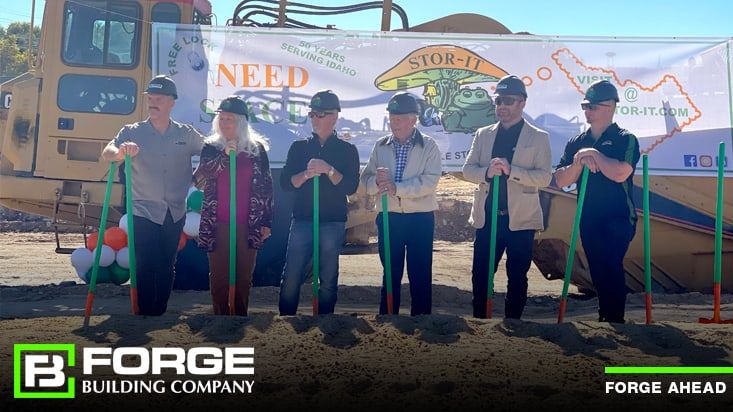
Boise, Idaho. – October 18, 2022 – Forge Building Company, a leading national building company focusing on self-storage and innovative building solutions, announced today the groundbreaking of the first phase of its new Stor-It facility construction project on Federal Way in Boise.
The first phase of this project includes 240,000 square feet of facility. The facility is located at 6099 S. Federal Way in Boise and will serve the growing population and business community. The new facility is on track to open in November 2024.
“Our relationship with Stor-It started in 2001,” said Hamish Bell, CEO of Forge. “Since that first project, we have been involved in helping Stor-It develop, do maintenance and repairs, remodel, or build facilities from the ground up for its 20 facilities. They now manage over three million square feet of self-storage space! This treasured relationship was the catalyst that led to the founding of Forge Building Company in 2007.”

New Stor-It facility construction groundbreaking ceremony
Stor-It has been around for 50 years and is the largest storage provider in Idaho. What started as just one storage location over three decades ago has since expanded to more than 20 facilities. From Boise to McCall, Stor-It facilities have over three million square feet of total square footage!
“The values that Stor-It holds strong are completely in alignment with those of Forge Building Company,” said C.W. of Stor-It. “Both companies treat their customers and employees like family. We would never build, renovate, or consider a property without Forge. Because of our relationship of over 20 years, we know that if Forge is involved, it will get built to the highest standards.”
The company started with a professor teaching business classes in real estate and financing at Boise State University. He loved teaching his classes using real examples and encouraged his students to apply them to what he was teaching them.
One day, some students came to him and said they had found a piece of property to invest in. The professor was excited and asked the students, “How will you purchase it? What are you going to build on it to make money? What is your plan to sustain the business?”
The students wanted to invest in a property on Mitchell Street in Boise, Idaho and put storage units on it as an investment. This was laughable at the time but did spark the professor's interest. The professor believed in his students, and they all took the risk.
Stor-It Self Storage was started in 1972 by this professor and four of his students. After the students graduated and moved on, they were eventually bought out by the professor. He continued to grow the business with his family every step of the way. He even has his grandchildren working by his side in the family business!
Founded in 1972, we opened our doors at the first Stor-It location on Mitchell Street in Boise, ID, making it the first operational self storage provider in Idaho. What started as just 600 storage units grew over 50 years to what we call a “well-oiled Green Machine.” We are unique in that we Forge build our sites very large, maximizing the square footage. One site can range from 80,000 square feet to the current largest of 455,000 square feet. Each site is designed perfectly to fit its our customer’s storage needs.
We truly know storage inside and out. Many of our family members were born and raised at the Stor-It locations. They say their backyard was an asphalt jungle of doors. With a core of strong family values today, our company is still a family-run business. For over 50 years, three generations of relatives have worked together to provide the best storage solutions in Idaho.
For more information, please visit https://www.stor-it.com/.
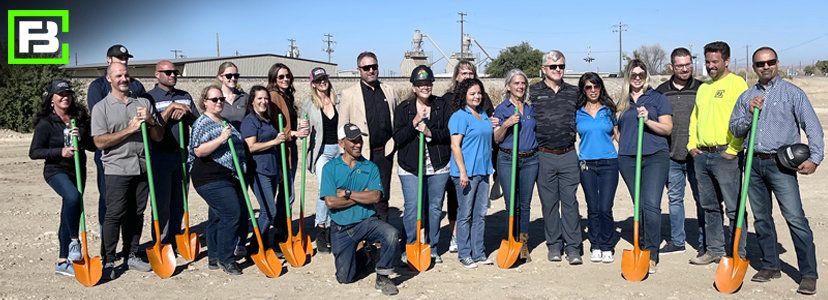
Founded in 2007 and headquartered in Boise, Idaho, Forge Building Company was created after its founders, Hamish and Hayden, spent decades working in the steel-structure industry. Using their expertise in storage and focusing on the three pillars of buildings, designing, and erecting, led the company to a more diverse portfolio and stronger strategic partnerships across the U.S.
Today, the company offers steel buildings for self-storage, RV & boat storage, car washes, airplane hangars, large warehouses, fish hatcheries, and craft breweries/restaurants. Other offerings include pre-engineered metal buildings for industrial and commercial applications.
With a strong portfolio of partners and clients, the Forge team has completed over 500+ jobs, built over 50 million square feet and remains privately owned. This solid team with complimentary skills was founded on a rugby field in New Zealand over two decades ago and is now working to be the best in the industry.